If you’re been collecting houseplants for a while, you’ll undoubtedly have heard of Pilea peperomioides. Better known as the Chinese money plant or even just Pilea, this round-leaved, easy-care houseplant has taken the world by storm.
And it’s not difficult to see why! This is an undemanding, quick grower that’s super easy to propagate.
Keep reading for everything you need to know about Chinese money plant care and growing this popular houseplant indoors.
| Common name(s) | Chinese money plant, Pilea, UFO plant, pass-it-on plant, lefse plant, pancake plant, missionary plant, friendship plant |
| Scientific name | Pilea peperomioides |
| Family | Urticaceae |
| Height and spread | Up to 15 1/2 inches high and 10 inches wide |
| Light | Bright indirect |
| Soil type | Well-draining |
| Water | Keep lightly moist |
Disclosure: If you shop from my article or make a purchase through one of my links, I may receive commissions on some of the products I recommend.
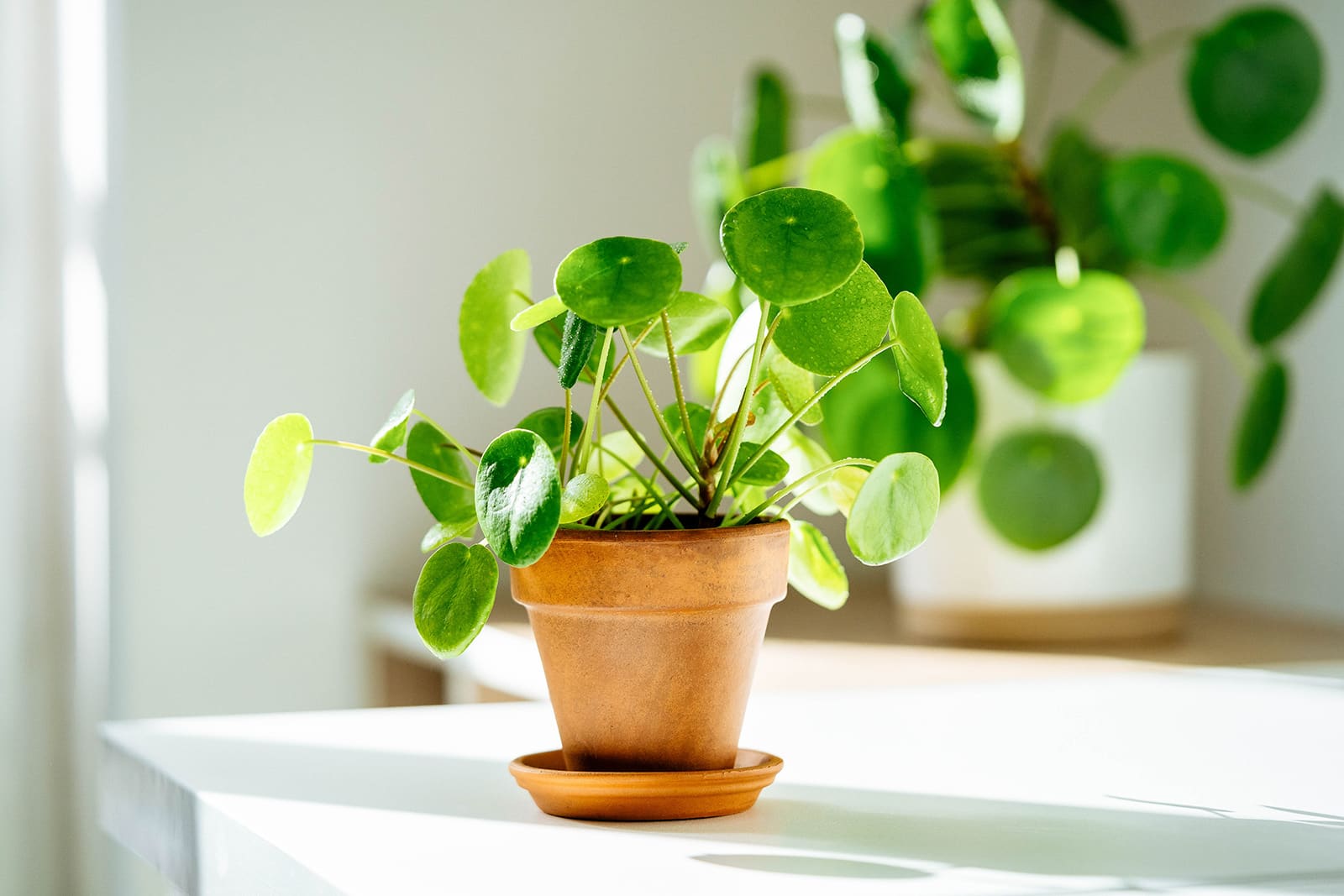
About Chinese money plant
Natural habitat
Its common name reveals where the Chinese money plant is naturally found: This species is native to the southern Chinese Yunnan and Sichuan provinces. These are mountainous regions connected to the Himalayan plateau, and Pileas are therefore found at altitudes up to 3000 meters (almost 10,000 feet).
The species’ natural habitat is described as “cliff-ledges and humus-covered boulders in shade” (Radcliffe-Smith, 1984). It prefers moist and forested zones.
Description
As its scientific name suggests, Pilea peperomioides is very similar in looks to the many species of the popular houseplant genus Peperomia. The raindrop Peperomia (Peperomia polybotrya) in particular looks so much like the Chinese money plant that houseplant lovers often confuse them.
In reality, Pileas are actually members of the nettle family, Urticaceae, and not that closely related to Peperomia. You can tell a Chinese money plant apart from a raindrop Peperomia by the shape of its leaves, which are almost always completely circular with no point.
(As an aside, Chinese money plants should also not be confused with what are commonly called money trees, or Pachira aquatica.)
The species is an evergreen perennial whose long-stemmed leaves sprout from a brown central stem. As the plant ages, the bottom of the stem usually loses its leaves, giving it an almost shrubby look.
Pilea peperomioides leaves can grow to up to 4 inches in diameter, with the plant itself capable of reaching up to 15 1/2 inches in some cases (although it usually stays a little smaller). This is a quick grower, and the great thing is that it’s pretty low-maintenance, making it a great choice if you don’t have much houseplant experience yet.
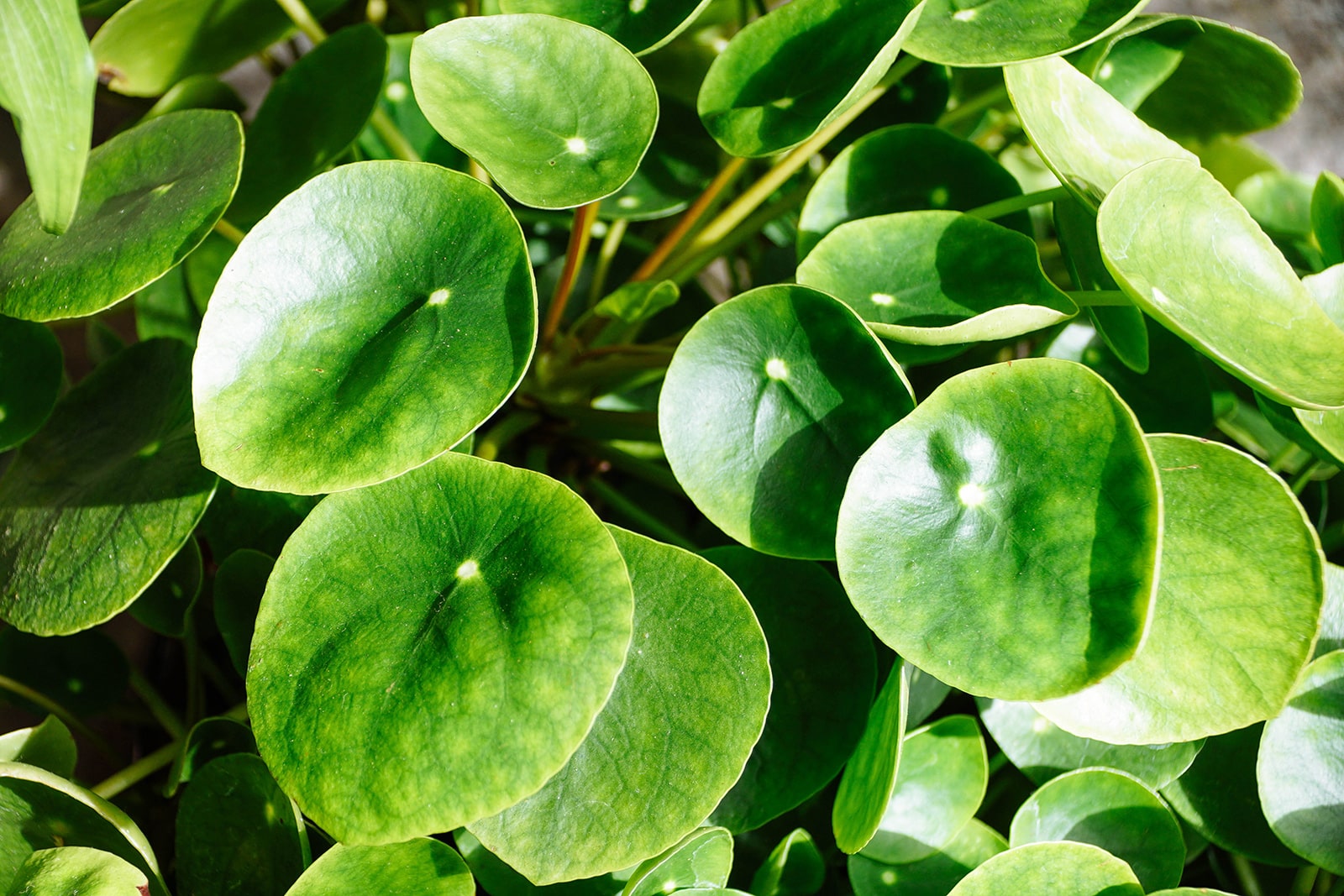
Uses and history
In China, Pilea peperomioides is used in traditional medicine. Patents exist for uses of the plant ranging from the treatment of vasculitis to healing bone fractures, infantile malnutrition, and gastritis.
If you love a little houseplant history, you’ll enjoy the story of how the Chinese money plant reached the horticultural superstar position it holds today.
In the West, it took folks a very long time to catch on to its existence. The whole thing was a botanical mystery for a good while! Keep reading…
Pilea history
Pilea peperomioides was first collected by western scientists in 1906, but not much happened after that, scientifically speaking. Part of that may be due to the fact that, as we discussed, it’s naturally found in a pretty inhospitable range in China.
The plant did somehow become part of many houseplant enthusiasts’ collections, but no one really had a name for it until the 1980s. This is when a botanist at Kew (England’s royal botanic garden) finally managed to connect it to a charming round-leaved Chinese plant that was described in 1912 and then promptly forgotten by scientists.
According to a 1984 article in Kew Magazine, it turned out that although botanists hadn’t paid the Chinese money plant much attention, a Norwegian missionary had taken cuttings home all the way from the Chinese Yunnan province way back in 1946.
Clearly those cuttings took off, because the plant was widespread in homes in Scandinavia and beyond by the time Kew and other botanic gardens started looking into it.
The story doesn’t end there. After scientists became aware of the avid trade in cuttings of the Chinese money plant among houseplant enthusiasts, it still took absolute ages for commercial nurseries to become aware of their potential.
It’s a good thing the species is so easy to propagate, because if you wanted one, you had to get cuttings or baby plants from another houseplant lover through Facebook or Etsy.
Pilea today
Until very recently (say, up to about 2018, in my experience), it was pretty much impossible to buy a Pilea peperomioides in-store in most areas. That is, unless you lived in The Netherlands, which is where many of our favorite houseplants are grown and exported from, meaning the Dutch also get first dibs on new and exciting varieties.
Houseplant lovers were rabidly searching for the coveted species, which was already an Instagram superstar but crazy hard to find!
Luckily, nurseries eventually woke up and started mass-producing the plant. It has now finally become a common sight in plant stores and garden centers. As described below, a few variegated cultivars have popped up recently as well, and are slowly becoming more widely available.

Chinese money plant varieties
- Pilea peperomioides ‘Mojito’: A variegated Pilea that features lighter green leaves than the normal Chinese money plant. The leaves are speckled with small splashes of darker green.
- Pilea peperomioides ‘Sugar’: Also variegated, with tiny white speckles on a normal base color, almost like someone sprinkled sugar on the leaves.
- Pilea peperomioides ‘White Splash’: Normal base color with larger, silvery-white splashes of variegation.
I also noticed that a Dutch nursery patented a new variety of Chinese money plant in 2021 that it named ‘MOSPILMOJ.’ It looks similar to ‘Mojito’ but with a yellower base color on the leaves. A few other companies have already licensed it, but I haven’t seen it offered for sale anywhere yet.
where to buy
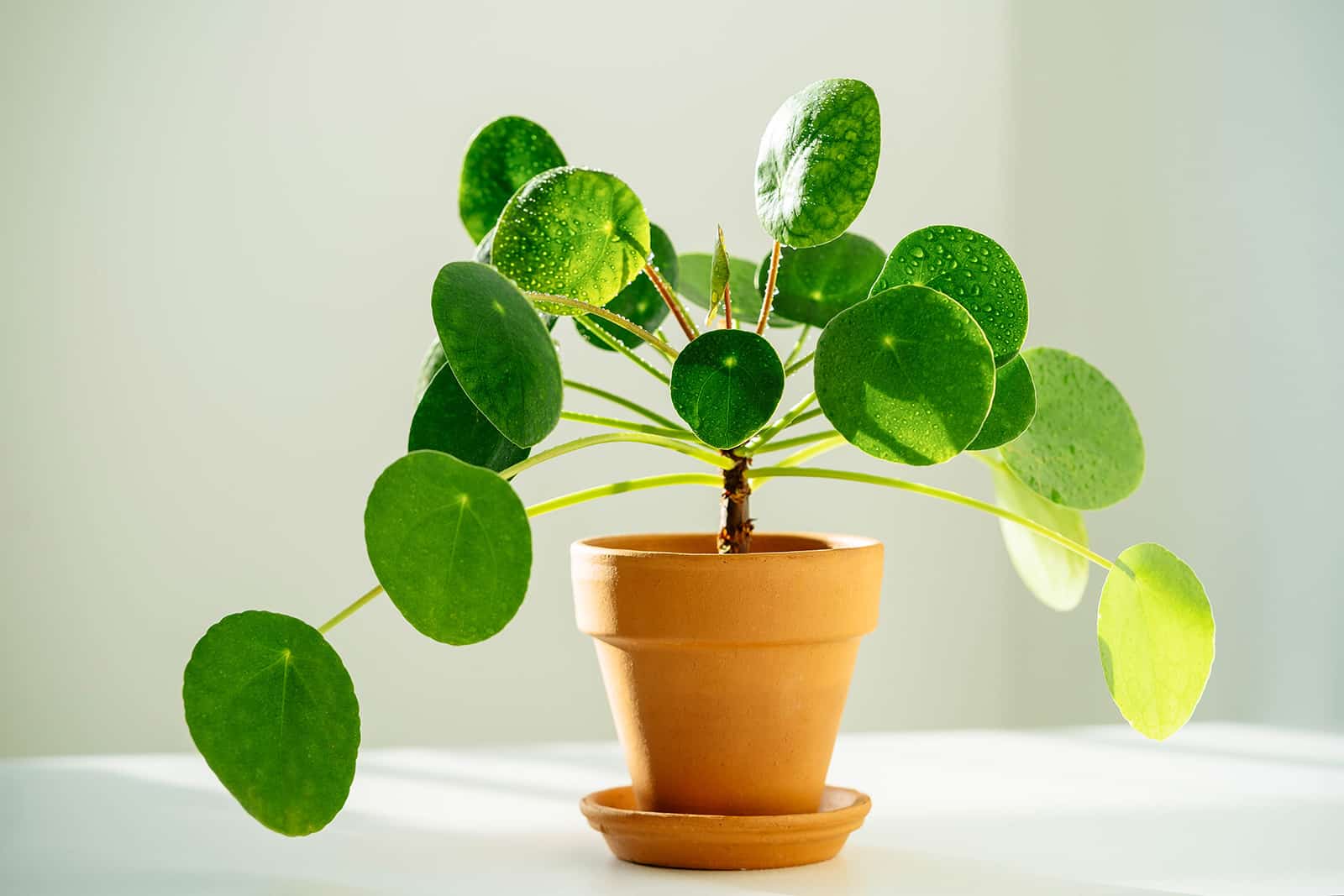
Caring for Chinese money plant
Light and temperature
Because it naturally occurs in shaded forest regions, the Chinese money plant isn’t overly demanding when it comes to light. No direct sun needed for this one! Place yours on a windowsill, or at least near a window that receives plenty of indirect light, and you’re all set.
If you do want to keep your Pilea in a spot that gets some direct rays, be sure to acclimate it gradually to prevent its leaves from burning. Don’t keep it in the dark, as that will result in very slow growth, leaf drop, and other issues. For those whose windowsills are already full of houseplants, there’s always the option of artificial lighting.
Because the Himalaya foothills aren’t always perfectly toasty, this is a great species for those slightly cooler spots in the house (by drafty doors, for instance) that wouldn’t be tolerated by fussy tropicals like Alocasias.
It’s technically adapted to being able to withstand temperatures down to freezing, although it does stop growing when things get too cold. For the best results, it’s a good idea to at least keep temps above 50°F.
Water and humidity
One nice thing about the Chinese money plant is that it’s not too fussy about water. It definitely appreciates lightly moist soil, especially during summer, but it won’t instantly kick the bucket either if you forget about it for a few days. It’s better to underwater than to overwater, as the latter can lead to root rot.
I can’t tell you the exact amount of water your Pilea will need, nor how often you should be watering, as all of that depends on factors like light, temperature and soil. The best way to figure out whether it’s time to water is by gauging the moisture level in the soil: just stick your finger in there. If it still feels damp, wait a little longer.
You’ll get to know your plant’s personal “rhythm” soon enough! You’ll likely end up watering up to twice a week in summer and once a week or less in the dormant winter months.
As for humidity, the Chinese money plant isn’t too picky about it, but it does prefer air moisture levels over 50 percent. If your home is consistently under 40 percent, you may want to invest in a humidifier. Your other houseplants (and your own sinuses) will thank you as well.
Soil and planting
As mentioned above, overwatering a Chinese money plant can lead to root rot. Like almost all houseplants, this species just really doesn’t like wet feet! This is why it’s also important to offer good drainage, because if excess water can’t go anywhere, things can quickly become nasty.
In order to provide proper drainage, it’s a good idea to use a soil mixture that has some gritty material mixed in. Pure houseplant potting soil often just retains a bit too much water, so add at least 20 percent perlite and maybe some fine orchid bark. This creates air pockets that prevent choking the roots and helps water flow away freely.
The type of planter you use for your Pilea doesn’t matter, although it’s crucial to always go for something that has a drainage hole at the bottom. After all, why would you go through the trouble of mixing a well-draining soil mixture if excess water doesn’t have anywhere to go once it reaches the bottom of the pot?
Place a saucer underneath and remove any water that has flowed into it around an hour after watering. This way your Pilea only gets what it needs and nothing more.
Recommended products for Chinese money plant care:
- Good Earth Organics Premium Potting Soil
- FoxFarm Ocean Forest Potting Soil
- Perfect Plants Organic Perlite
- Better-Gro Orchid Bark
Fertilizing
The Chinese money plant is a pretty quick grower, which means it’ll appreciate a little extra boost now and then. This especially applies if it’s been a while since you’ve repotted, as the soil nutrients will have been depleted by now. It doesn’t need a lot: just apply some regular liquid houseplant fertilizer every other week or so during watering.
Be sure to only fertilize during the growing season and if your Pilea is doing well. If it’s struggling, or just not growing (like during winter), applying fertilizer can damage the roots and make things worse.
Recommended fertilizers for Chinese money plants:
- Houseplant Resource Center Liquid Fertilizer for Houseplants
- Instant Biologics Instant Plant Food (Fizzing Nutrient Tablets)
- Maxsea All-Purpose Seaweed Plant Food
Pruning
Your Chinese money plant generally won’t need to be pruned aside from the occasional removal of dead foliage.
It’s normal for plants to shed their bottom leaves as they grow, because the top ones receive more sun and are therefore more useful for photosynthesis purposes. Unless leaves are dropping at an alarming rate, a bit of brown foliage is nothing to worry about.
Dividing or repotting
You may notice your Pilea’s planter getting overcrowded with baby plants. As we discussed in the section on history, this species spread throughout the Nordic countries and beyond without ever really appearing for sale in shops.
That’s because it produces so many offshoots, you may just end up practically begging people to take them off your hands! This also explains why so many of Pilea peperomioides’ common names refer to passing it on or sharing it.
So should you remove your Chinese money plant’s “offspring” from the planter, or can you leave them for a fuller look? In the end, it really depends on your own preference. Just remember that if you decide to leave them, you may have to repot the plants more often, because things can get crowded pretty quickly with how fast they grow.
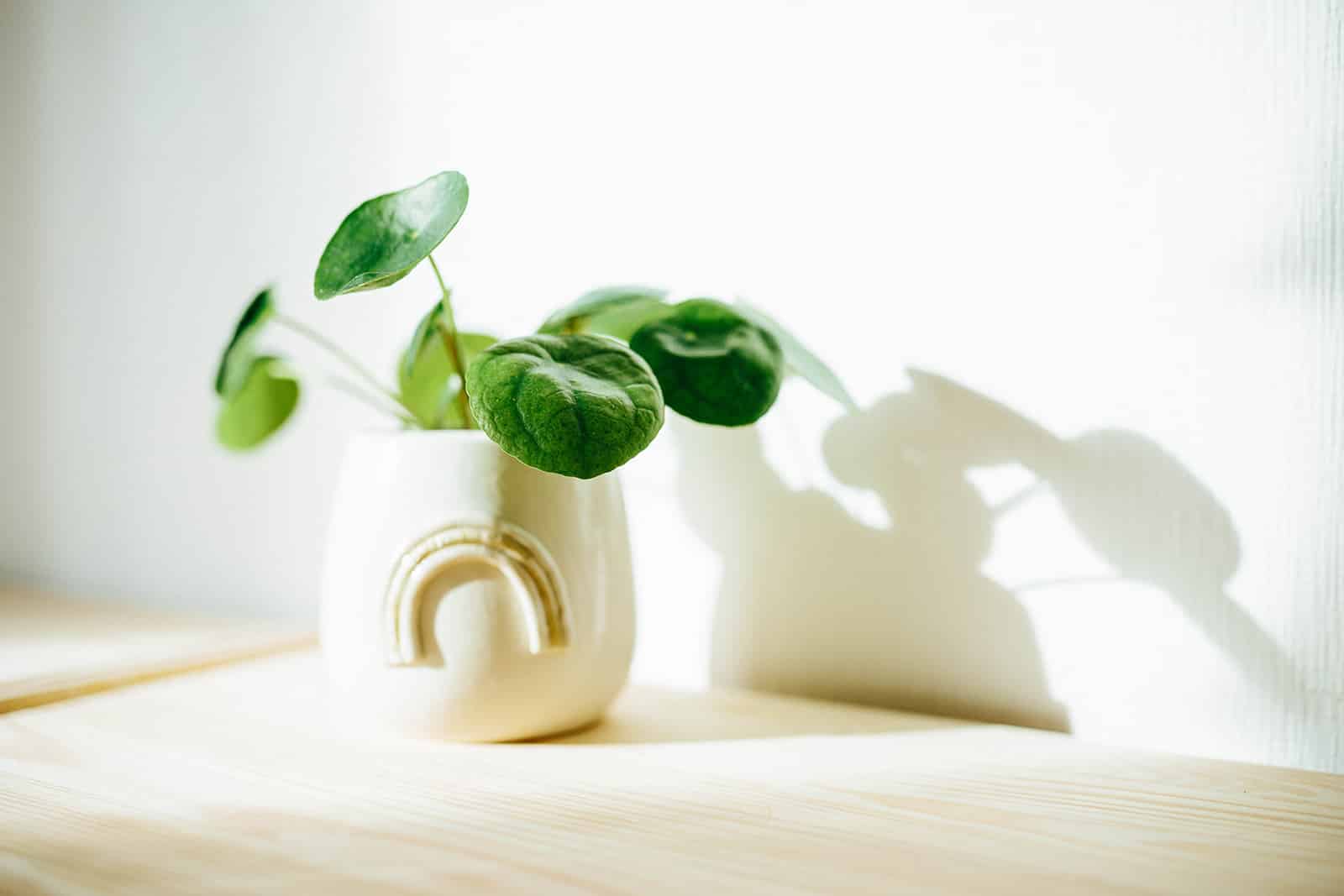
Propagating Chinese money plant
After all this ado about the Chinese money plant’s ease of propagation, let’s have a look at how it actually works. The great thing with this species is that there are just so many different ways to multiply it!
Here are the different propagation methods you can consider:
- Removing soil offsets: These pop up next to your mother plant and can be removed once they have a few leaves of their own. The advantage is that they’ll generally also already have their own root system, which means they’ll keep growing almost uninterrupted once you sever their connection to mom and pot them up separately.
- Removing stem offsets: These actually grow on the mother plant’s stem, and they’re not quite as common as soil offsets. Once the babies on the stem are large enough, they can easily be broken off to continue life on their own, although you’ll have to wait for them to root since they lack their own systems.
- Stem cuttings: As with most houseplants, there’s no reason you can’t behead your Pilea and root the cutting to grow a whole new plant. The old specimen will look a little ugly for a while, but it should usually re-sprout just fine.
- Leaf propagation: Yep, it is technically possible to propagate a Chinese money plant using a single leaf, although the success rates are a little lower. The key is to also remove a tiny bit of stem when you take the leaf cutting. If you don’t, the leaf may root in water, but it will never grow.
If you’re using the stem offset or stem cuttings methods, you can opt to either root your new plants in water or soil. For soil propagation, it can help to place the cutting under a propagation dome or to put a clear plastic bag over the planter. This keeps the humidity in, which your fragile new Chinese money plant will appreciate.
When it comes to leaf propagation, I recommend the water method, as it just seems to have a higher rate of actually rooting this way.
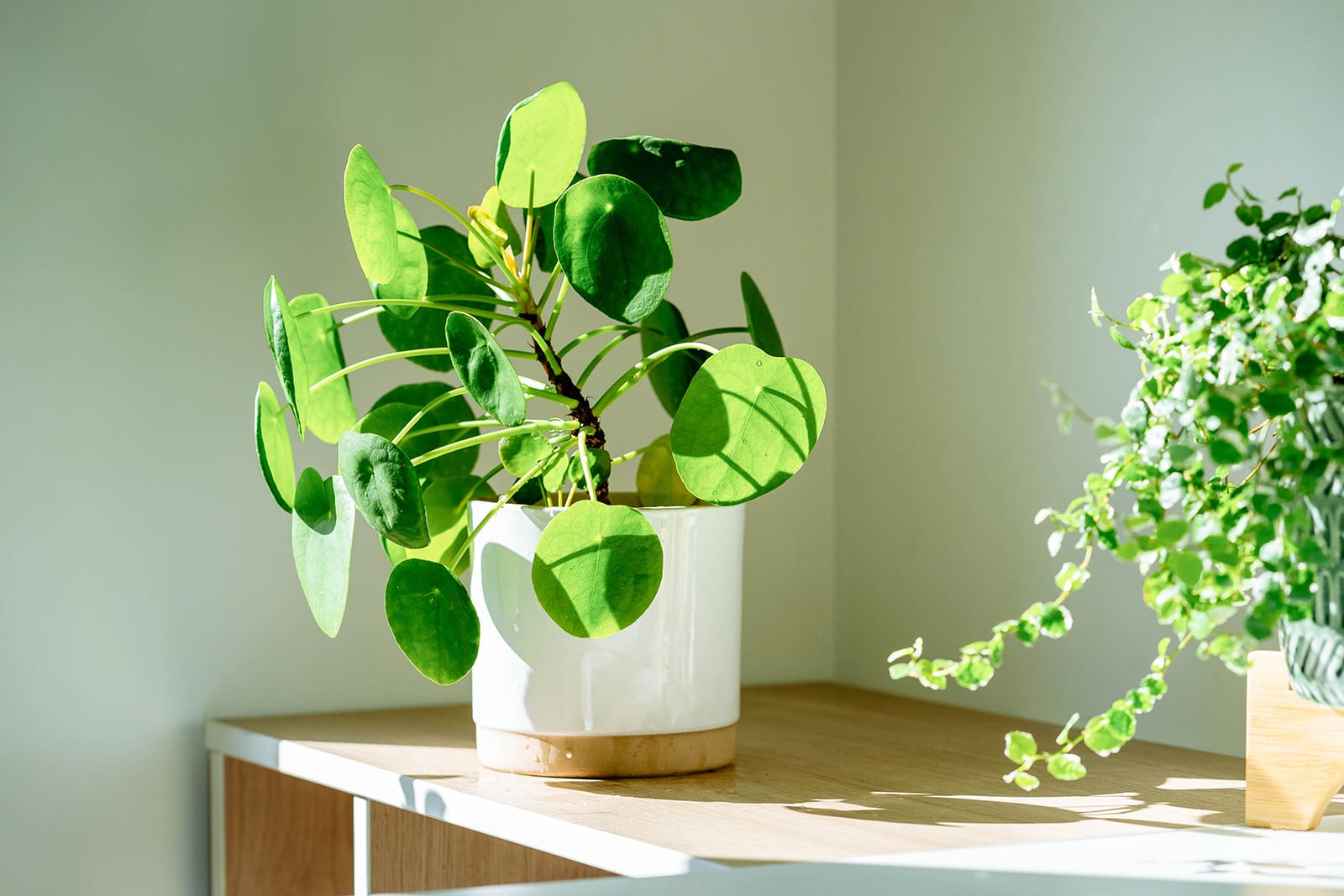
Frequently asked questions
Sources:
- http://www.wildchicken.com/nature/garden/ga008_a_chinese_puzzle.htm
- Radcliffe-Smith, A. (1984). 5. Pilea peperomioides: Urticaceae. The Kew Magazine, 14-19.


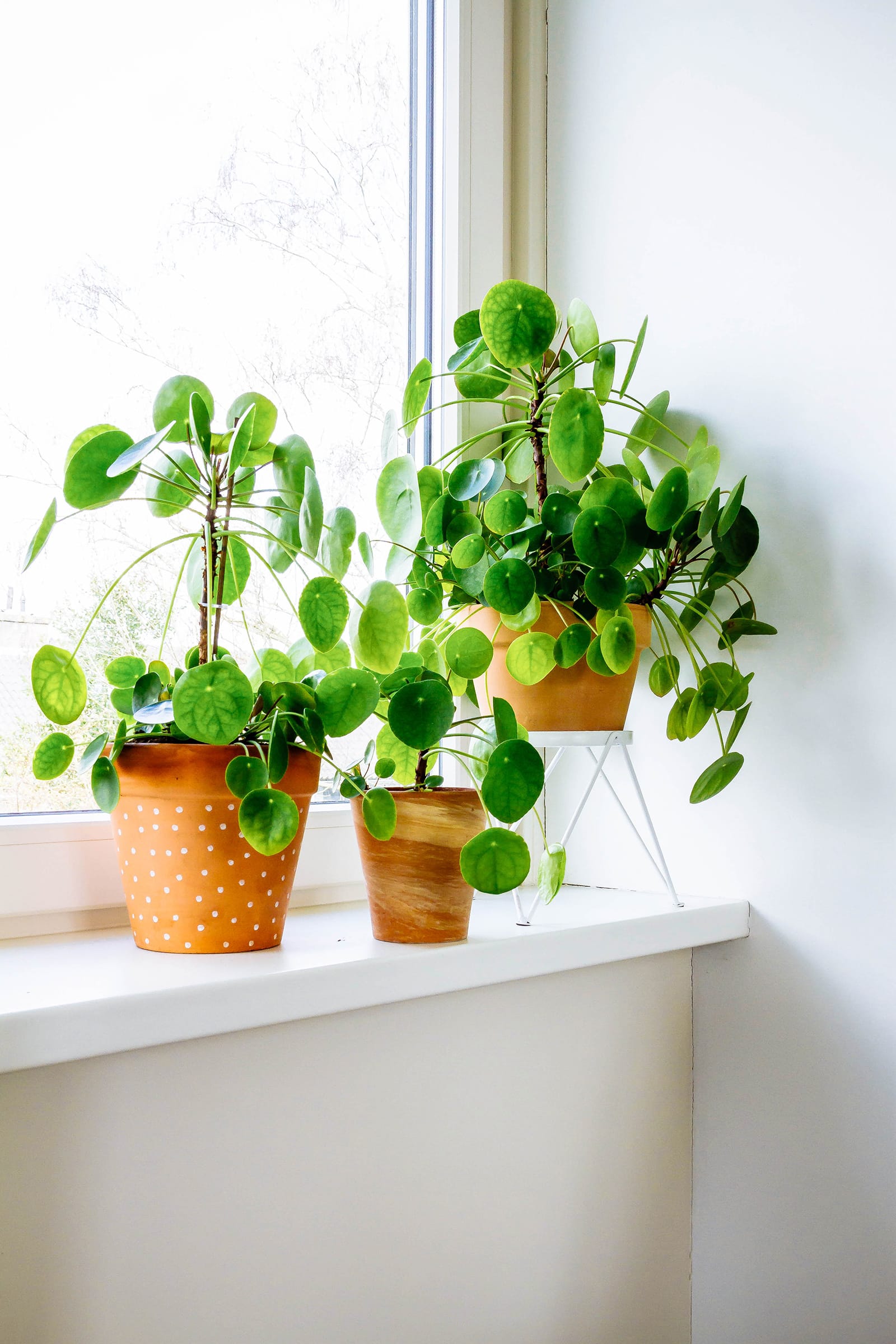













My money plant is getting tall it’s like 18 to 24 inches tall and I have it propped up but I’m wondering how tall do I need to let it get or should I let him let it like droop down the sides of the pot or get a proper trellis?